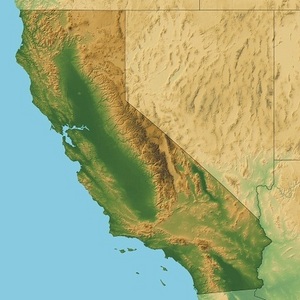UC-Davis publishes status update of Calif. LCFS

May 7, 2013
BY Erin Krueger
The University of California-Davis Institute of Transportation Studies has published a new status review of the state’s low carbon fuel standard (LCFS). The review is the second in a series of periodic status reports. According to information published by the ITS, the status reports review data, analyze trends and identify potential challenges associated with the program. However, the status reports do not make predictions.
California’s LCFS requires obligated parties to reduce the carbon intensity of the fuels they supply by a minimum of 10 percent by 2020, starting with a 02.5 percent reduction in 2011. The percentage steps up through 2020.
The spring 2013 status review addresses several topics, including credits and deficits, the carbon intensity of fuels, credit trading and prices, federal renewable fuel standard (RFS) and implications for LCFS feedstocks, as well as issues that affect compliance.
Advertisement
According to the report, low carbon fuels displaced approximately 6.2 percent of California’s gasoline and diesel transportation fuels in 2012. The average carbon intensity for gasoline was 84.95 grams of carbon dioxide equivalent per megajoule (gCO2e/MJ), and average carbon intensity for diesel was 58.34 gCO2e/MJ. By the close of the year, the ITS said the LCFS recorded net excess credits of 1.285 million metric tons of CO2e, which equates to approximately half the credits needed to meet the 2013 obligation.
Regarding biofuels used to meet LCFS obligations, the ITS report noted that 78 percent of LCFS credits were generated from ethanol in 2012. An additional 12 percent were generated from natural gas and biogas, in both liquid and compressed forms. Approximately 9 percent of credits under the program were generated for biodiesel and renewable diesel, with only 1 percent from electricity.
On a volume basis, corn ethanol and ethanol pathways of mixed corn/sorghum/wheat accounted for 95 percent of the fuel volume under the LCFS, but only 80 percent of the net LCFS credits. Corn/sorghum/wheat mixed ethanol contributed approximately 19 percent of biofuel credits. Due to their low carbon intensity value, biofuels from waste feedstock generated 10 percent of the LCFS credits in 2012, but comprised only 1 percent of the total biofuel volume.
Advertisement
According to the report, California consumed 19 percent of total U.S. imports of sugarcane ethanol in 2012, but only 10 percent of the nation’s total fuel and corn ethanol consumption. The ITS said this usage pattern could be due to more favorable treatment of Brazilian sugarcane ethanol under the LCFS.
None of the 21,093 gallons of cellulosic biofuels produced nationwide in 2012 reached the California market for LCFS compliance purposes.
A full copy of the 2013 status report can be downloaded from the UC-Davis ITS website.
Related Stories
International Sustainability & Carbon Certification has announced that Environment and Climate Change Canada has approved ISCC as a certification scheme in line with its sustainability criteria under its Clean Fuel Regulations.
Legislation introduced in the California Senate on June 23 aims to cap the price of Low Carbon Fuel Standard credits as part of a larger effort to overhaul the state’s fuel regulations and mitigate rising gas prices.
The government of Brazil on June 25 announced it will increase the mandatory blend of ethanol in gasoline from 27% to 30% and the mandatory blend of biodiesel in diesel from 14% to 15%, effective Aug. 1.
The U.S. Court of Appeals for the D.C. Circuit on June 20 rejected several claims challenging the U.S. EPA’s RFS Set rule but will require the agency to provide additional information on certain environmental findings.
The 2025 International Fuel Ethanol Workshop & Expo, held in Omaha, Nebraska, concluded with record-breaking participation and industry engagement, reinforcing its role as the largest and most influential gathering in the global ethanol sector.
Upcoming Events










